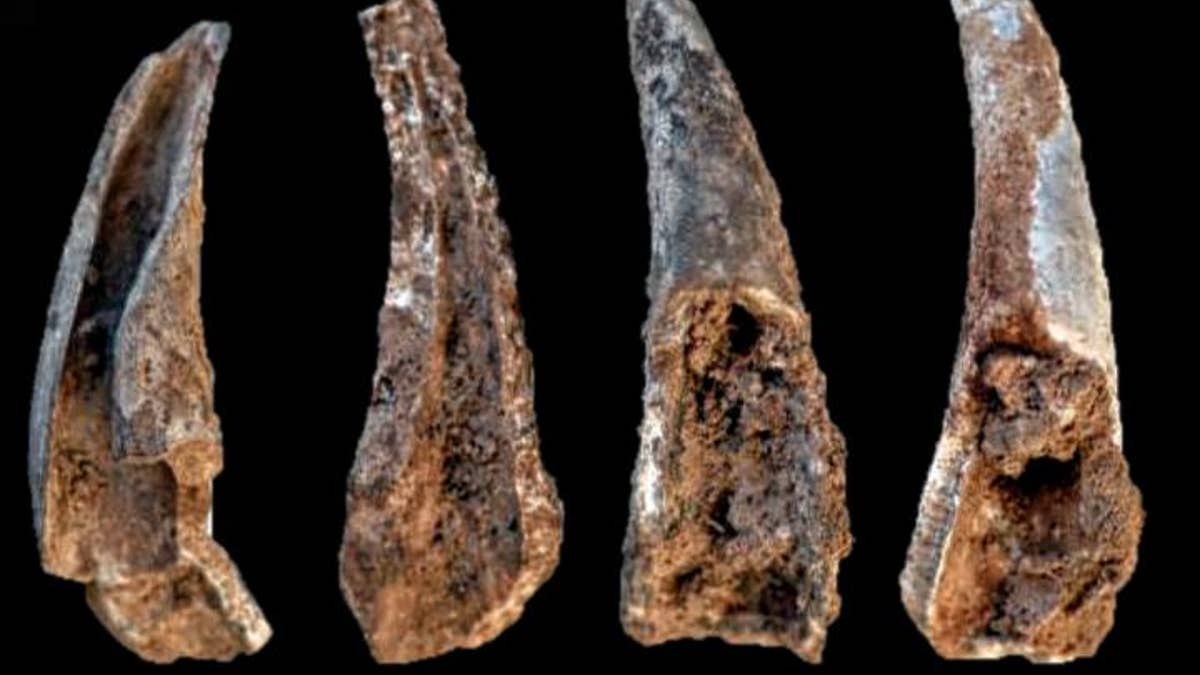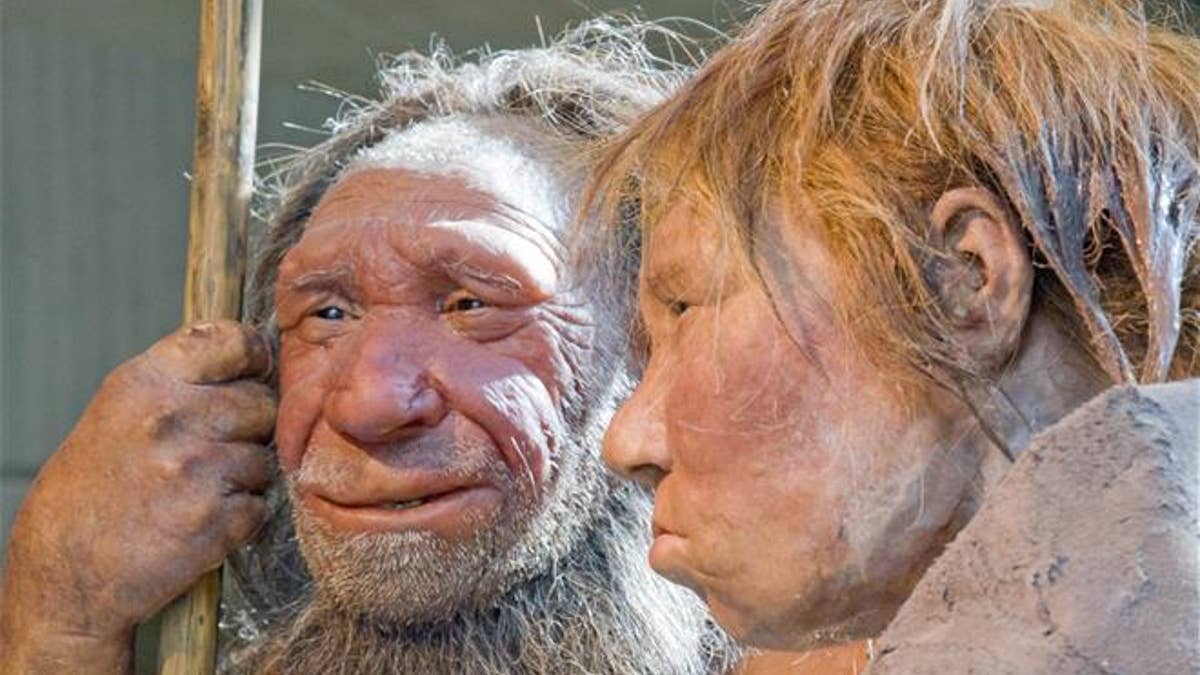Bones reveal Neanderthal child was eaten by large bird
Archaeologists in Poland have identified the prehistoric bones of a Neanderthal child, that appears to have been eaten by a large bird.
Get all the latest news on coronavirus and more delivered daily to your inbox. Sign up here.
More than 80,000 years ago, Neanderthals were eating a wide range of food from the sea, according to the latest research, even hunting dolphins and seals.
The study, which was led by the University of Gottingen in Germany, sheds new light on our extinct relatives. Excavation of a cave at Figueira Brava in Portugal provided evidence that Neanderthals looked to the sea for their food, as well as the land. “Their diet included mussels, crustaceans and fish as well as waterfowl and marine mammals such as dolphins and seals,” the researchers explain in a statement.
A paper on the research has been published in the journal Science.
NEANDERTHAL BEACHCOMBERS WENT DIVING FOR SEASHELLS, SCIENTISTS DISCOVER
Scientists were able to study deposits of calcite, a mineral, during the excavation of the cave, nearly 19 miles south of Lisbon. This meant that experts were able to date the excavated layers of the Figueira Brava cave to between 86,000 and 106,000 years, during the Neanderthal era. “The use of the sea as a source of food at that time has so far only been attributed to anatomically modern humans (Homo sapiens) in Africa,” the researchers explain. “Food from the sea is rich in omega-3 fatty acids and other fatty acids that promote the development of brain tissue.”

View of the Figueira Brava cave with its three entrances. (João Zilhão)
The findings increase our knowledge of Neanderthals. “The recent results of the excavation of Figueira Brava now confirm that if the habitual consumption of marine life played an important role in the development of cognitive abilities, this is as true for Neanderthals as it is for anatomically modern humans,” the researchers explained.
The scientists have also noted that, more than 65,000 years ago, Neanderthals made paintings in three caves in the Iberian Peninsula. They also said that perforated and decorated seashells can be attributed to Neanderthals.
GRISLY DISCOVERY: BONES REVEAL NEANDERTHAL CHILD WAS EATEN BY LARGE BIRD
In another recent study, experts analyzed seashells fashioned into tools that were discovered in Italy in 1949 to reveal how some Neanderthals had a much closer connection to the sea than was previously thought.

Cracked-open and burnt fragments of edible crab pincers. (João Zilhão)
In a separate study released last year, a team led by anthropologist Erik Trinkaus of Washington University reported that many Neanderthals suffered from “swimmer’s ear,” bony growths that form in the ear canal through regular exposure to cold water or chilly air.
Experts have been gaining new insight into Neanderthals in recent years. In 2018, for example, archaeologists in Poland identified the prehistoric bones of a Neanderthal child eaten by a large bird.
CLIMATE CHANGE DROVE SOME NEANDERTHALS TO CANNIBALISM
In another study released in 2018, scientists suggested that climate change played a larger part in Neanderthals’ extinction than previously thought.

March 20, 2009: Reconstructions of a Neanderthal man named "N," left, and woman called "Wilma," right, at the Neanderthal Museum in Mettmann, Germany. (AP Photo/Martin Meissner)
Last year researchers in France reported that climate change drove some Neanderthals to cannibalism.
CLICK HERE TO GET THE FOX NEWS APP
The closest human species to homo sapiens, Neanderthals lived in Eurasia for around 350,000 years. Scientists in Poland report that Neanderthals in Europe mostly became extinct 35,000 years ago. However, there are a number of theories on the timing of Neanderthals’ extinction, with experts saying that it could have occurred 40,000, 27,000 or 24,000 years ago.
Fox News’ Chris Ciaccia contributed to this article. Follow James Rogers on Twitter @jamesjrogers

